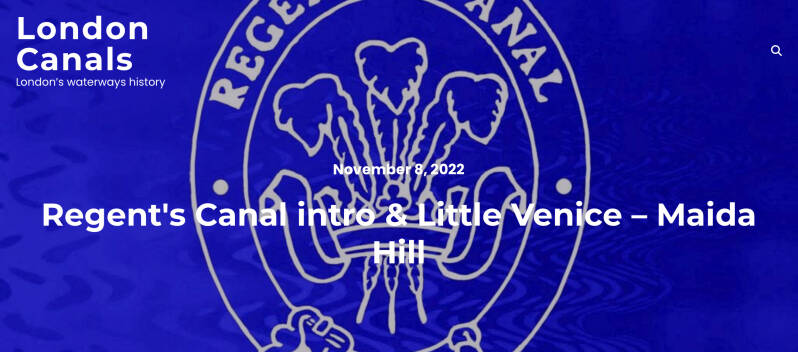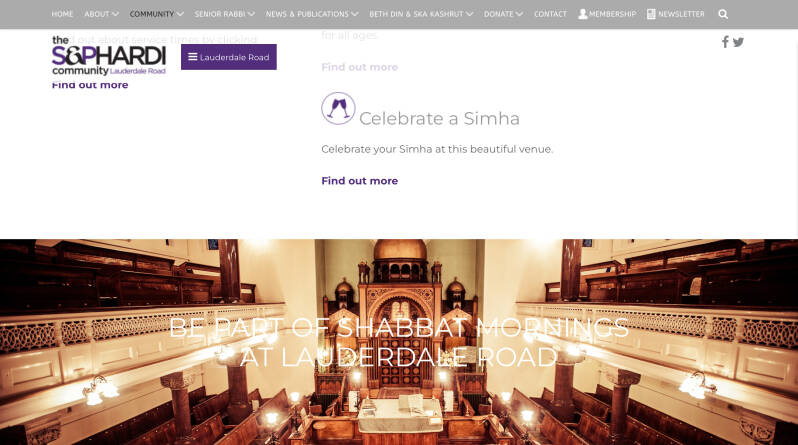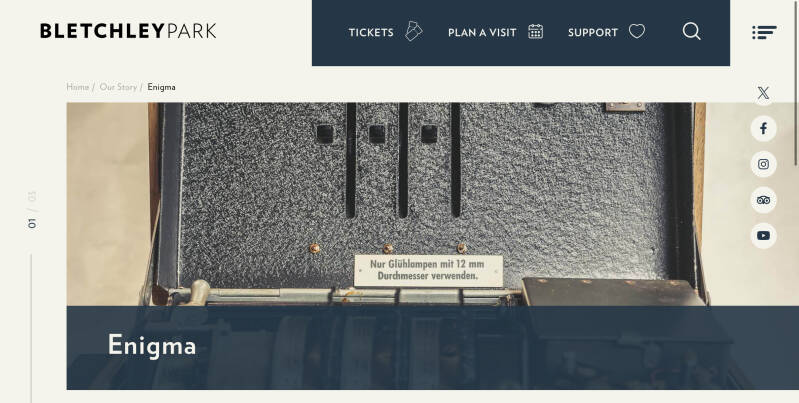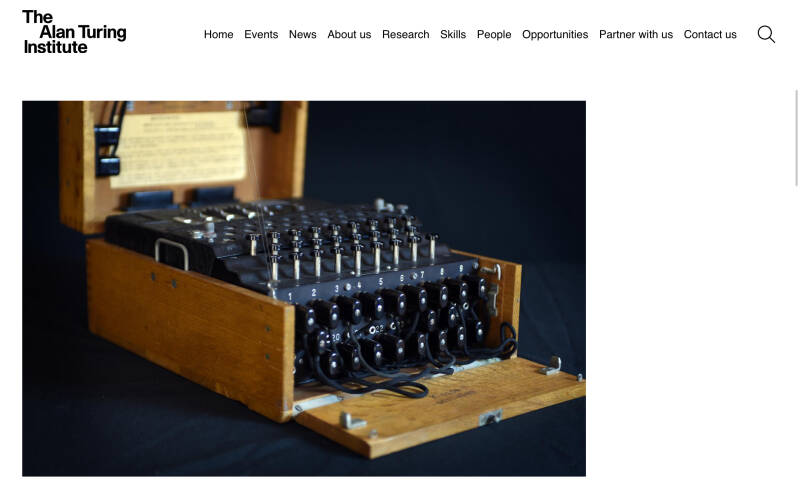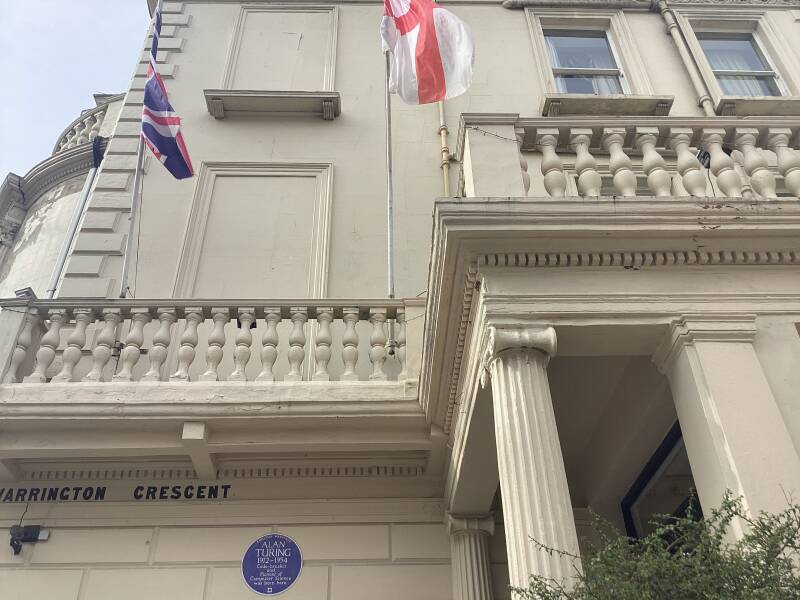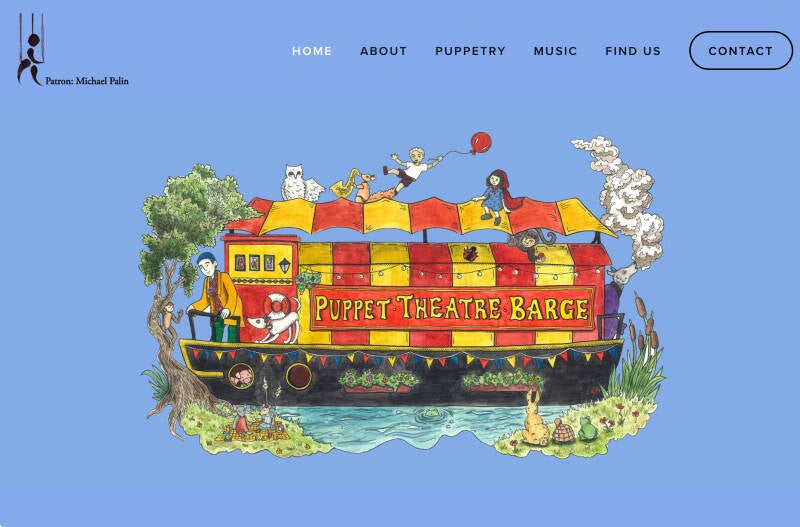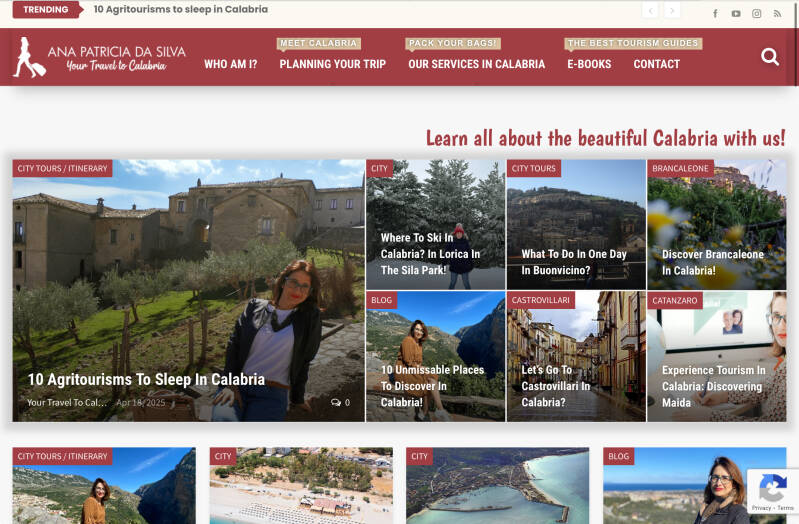
MAIDA VALE and LITTLE VENICE
In this chapter:
- PRINCIPAL route: walking/cycling through Maida Vale and Little Venice
- detour N to ST.AGUSTINE KILBURN Church
- diversion E along Bloomfield Road, towards REGENT’S PARK (for the WEST END or for ST.JOHN’s WOOD)
- diversion W to PADDINGTON GREEN and CHURCH ST.MARKET (MARYLEBONE)
- diversion S to PADDINGTON BASIN, CONNAUGH VILLAGE and HYDE PARK


Welcome to MAIDA VALE!. What about LITTLE VENICE?
An affluent residential district in north of Paddington, southwest of St John's Wood and south of Kilburn, on Edgware Road.
It is part of the City of Westminster and is three miles (five kilometres) northwest of Charing Cross. It has many late Victorian and Edwardian blocks of mansion flats. That was a very recent phenomenon here in London (the first one was build in VICTORIA ST, following a trend already established in Europe).
Little Venice is a comparatively recent name for parts of Maida Vale and Paddington in the City of Westminster. It consists of the area surrounding the Little Venice basin and its canals.
Much of the areas of West London were owned by WESTMINSTER ABBEY, since the 10th c, confirmed by a Charter of 1222. Within the DISSOLUTION OF THE MONASTERIES, the are became property of the Crown, but King Edward VI returned part of it to the Bishop of London, and some parts to Westminster Abbey. The Bishops conceded some leases. The nephew of Bishop Sheldon build a chapel in the 17th c, and the Sheldon family continued to possess land.
In 1836 the ECCLESIASTICAL COMMISSIONERS took over the Bishop’s land and acquired the Abbey’s. However, 40 years before some land had been leased to the GRAN JUNCTION CANAL COMPANY, and building leases had been granted on the estate
Names’ Origen: Trafalgar (Square), Waterloo (Bridge), Maida (Vale)
1806. If Sir John Stuart had called off his planned attack on a French stronghold in Calabria — or had lost the battle — Maida Vale may well have been known today as Warwick Vale, or Bishop's Vale or any other type of vale.
As it happened the general landed his soldiers safely on the toe of Italy, they marched inland to engage the larger Napoleonic force, which was established in mountains near St. Pietro di Maida.
General Reynier brought the Frenchmen down from the hills and upon the Plain of Maida battle was joined. At a crucial moment the British side was cheered by the arrival of Colonel Robert Ross and his regiment, which some days earlier had begun a diversionary thrust toward the south.
The enemy was routed, and a blow had been struck against the seemingly all-powerful French in Southern Italy. The date: 4th July, 1806. It is something of a slight to Maida Vale's prestige to note, however, that the battle was not decisive. It Sir John had included cavalry in his contingent and had pressed on immediately against the enemy Reynier's army may have been destroyed. But that still left Marshal Massena to the north with Naples in the bag.
The name of the area is derived thus from a pub whose name was taken from an Italian battle during the Napoleonic Wars. The original pub called The Hero of Maida stood on Edgware Road near the Regent's Canal until it closed in 1992. In the early 19th century, its hanging board displayed the likeness of the Georgian era General Sir John Stuart, under which was the legend “Sir John Stuart, the hero of Maida”.
General Sir John Stuart was made Count of Maida (a town in Calabria) by King Ferdinand IV of Naples and III of Sicily after the British victory in 1806. A few decades later, as the expansion of London gathered pace, the name stuck as the farmland around the pub was used for urban development in the 1820s.
In Shirland Road
This is not the original HERO OF MAIDA!


ALFRED HITCHCOCK Film Location!
”DOWNHILL”:After leaving the family home in disgrace, Roddy Berwick goes downhill to the London Underground on the wooden escalator at Maida Vale Station.
”DIAL M FOR MURDER”: In Dial M for Murder, Tony Wendice gives his home address as 61A Charrington Gardens
Maida Vale (road)
By 1868, a stretch of Edgware Road near the area had been officially named Maida Vale
Sutherland Avenue
A thoroughfare of broad grandeur, with this flower-filled roundabout… One of the noblest townscapes in the district,tin fact a CIRCUS had to be a focal point, as an extension of ELGIN AVENUE, as planed by the Surveyor of the BISHOP OF LONDON ESTATE
Lauderdale Road
SPANISH and PORTUGUESE SYNAGOGUE
In the late 19th and early 20th centuries, Maida Vale was a significant Sephardic Jewish district, to the extent that an 1878 magazine report reported that it was commonly called "New Jerusalem". An Anglo-Jewish Association and the Deaf and Dumb Home were based here. The SEPHARDIC COMMUNITY was established in England during the COMMONWEALTH, when CROMWELL’s regime welcomed Jewish bankers and merchants.
The new apartment blocks of the district found favor with large amounts of people of Jewish extraction, many of them arriving via the EAST END. For them MAIDA VALE (like BAYSWATER or HAMPSTEAD) was their promised land, their social salvation, after years of sacrifice and poverty in London’s EAST END. Here, they mingled the arts and the sciences, fashion and beauty… they were wealthy, polished, English…
The Synagogue was built in 1896, and reinforced the Jewish presence. In a Byzantine style, by the firm of DAVIS & EMMANUEL, at a cost of £9.800. Large copper-coated central dome.
According to the vicar of ST.SAVIOUR Rev. MARSHALL TWEDDEL, from 1/3 to 2/3 of the houses were inhabited by Jews, which made the local community “necessarily unproductive so far as parochial progress is concerned”
Lauderdale Road also played a key role in both the emergence of Zionism in the United Kingdom and the worldwide effort to compile Sephardi heritage. At the turn of the century the Sephardi community was led by Haham Rabbi Moses Gaster, from 1887 to 1917, who played a major role in the promotion of Zionism in the British Jewish community. The first meeting to plan the Balfour Declaration was held in his home.
The nineteenth century history of Lauderdale Road is wrapped up with the Sephardi families of what the chronicler of Jewish life in Britain Chaim Bermant called "the Cousinhood" or the Victorian Anglo-Jewish gentry. Many of the most esteemed families of Victorian Anglo-Jewry were associated with Lauderdale Road synagogue such as the Sassoon, Montefiore and Mocatta families. Prominent figures who attended Lauderdale Road in the nineteenth century included the sons of David Sassoon of Bombay, such as Sassoon David Sassoon, Reuben David Sasson and Arthur Sassoon. Sir Edward Sassoon, of the next generation, was president of the community.
The SASSOONS arrival marked the start of a growing number of members who were not by heritage Sephardi Jews from Spain and Portugal but Mizrahi Jews originally from communities across the Middle East.
Villas
THE WARRINGTON P.H
1850s. It was remodelled at the beginning of the 20th c., at the meeting point of these extremely affluent streets. Palatial, as the houses, it more florid.
A place that enjoyed a rakish reputation during the Edwardian era…
Probably one of the best examples of an Edwardian pub.A classic, according to CAMRA. . Portico. Columns. Art Nouveau tile work, in a striking mustard shade and stained glass. Glass of all sorts: brilliant-cut, acid-etched… Made in IRONBRIDGE (Shropshire).The two large iron lamps, like sentinels, at either side of the entrance. A majestic staircase sweeping down to the chief lounge, flaunting a highly decorated ceiling. A large marble counter crescent bar. Red carpets and plaster cherubs. A plump blowsy Madame of a pub!.
And indeed they do say that in its heyday when it was a hotel, a lot more went on that strictly should have…A brothel?. On the patterns of the MAISON TOLEREE?. Possibly, but unlikely, as as the 1895 Act swept away the few they were, and they were very unusual in England.
Was it an “accommodation house” where rooms were paid per hour, and the clients would buy drinks to the women renting them before the two going upstairs.
A regular here was MARIE LLOYD, “the Queen of the Halls”, who used to perform regularly at the METROPOLITAN THEATRE OF VARIETIES, on the EDGWARE RD., one of London’s most famous music halls, demolished in 1963. Her last bottle of champagne drank here forms part of the memorabilia. She was a great topper of champagne, and the place had a reputation…
Long after its Edwardian heyday, the place did its best to maintain the air: the slightly risqué murals around the bar and the window in the lounge, look perhaps a 1930s additions, interpolated to enhance the WARRINGTON’s naughty image.
And what makes all this more piquant is that the hotel stood (until 1983] slap-bag in the middle of one of the two Church Commissioners estates in London, whose rents helped pay the living of the Church of England clergy (the irony of nation’s vicars living in part on immoral earnings lent authenticity to the idea of the WARRINGTON’s past as a brothel, even if only as the result of wishful thinking…

Detour: You will be heading South, but before you go… have a look to the area North
MAIDA VALE STATION
Elgin Avenue
Ashworth Rd.
MOCK-TUDOR SEMIS
Elgin Mews (North/South)
Delaware Rd.
BBC MAIDA VALE STUDIOS
PADDINGTON RECREATION GROUND
THE CARLTON TAVERN
Among the buildings of architectural interest is the Carlton Tavern, a pub on Carlton Vale. Built in 1920–1921 for Charrington Brewery, it is thought to be the work of the architect Frank J. Potter and is noted for its 1920s interiors and faience tiled exterior. The building was being considered by Historic England for Grade II listingwhen it was unexpectedly demolished in March 2015 by the property developerCLTX Ltd to make way for a block of flats.[24] The pub was subsequently rebuilt and re-opened following a community campaign and planning appeals.[25]
ST.AGUSTINE KILBURN Church
COUNTY KILBURN?
Welcome to KILBURN!. It’s up to you to explore!
End of the detour


Back to the original route
Warrington Crescent

https://www.crescentgarden.co.uk/history
47a MATT DANGERFIELD basement flat
47A Warrington Crescent, the basement recording studio owned by singer/guitarist MATT DANGERFIELD of The Boys together with his old art school pal Barry Jones (London Cowboys & co-owner of the legendary Roxy club). This iconic studio is where UK punk pioneers including London SS, Sex Pistols, Damned, Clash, Generation X, Chelsea and of course The Boys recorded their earliest demos.
1914-18. ZEPPELINS and GOTHAS over London.
The largest bomb fell on London on 7th March 1918. A twin-engine GOTHA bomber released a 2.000 pound bomb, targeting the searching lights in PADDINGTON RECREATION GROUND, but, instead destroyed 5 houses here , and killed 12 people, injuring 23. Other houses were damaged.King and Queen visited. And the RAF was established 3 weeks later, in order to counter air-raids and cover the Army in France.
BEN GURION, first PM of the State of Israel
Lodging here, in the home of ARTHUR LOURIE (future ambassador of the State of Israel), after the fall of of France, early May 1940, until leaving for New York, in September.
In August he attended a reception at the ANGLO-PALESTINIAN CLUB, in Windmill St. He praised Britain: resilience, levelheadedness, inner confidence… and paid tribute to the Jews of WHITECHAPEL, He felt a sort of holiness in London, where Jews could feel safe.
BEN GURION had arrived in Palestine as a representative of the Zionist wing of the Russian revolutionaries. He was an admirer of Lenin, in whom he saw a man of iron, a driven, ruthless, experienced man…for whom no human life would be spare for the sake of revolution.
1917.The BALFOUR DECLARATION and the RUSSIAN REVOLUTION were, for him, seminal events.
1930. He founded MAPAI, forerunner of the LABOUR PARTY. For him socialism would be an end and a means through which Zionism would be realised.
1934. He met (in HODFORD ROAD, GOLDERS GREEN) VLADIMIR JABOTINSKY, an ideological opponent ( BEN GURION described his followers as a JEWISH NAZI PARTY)
Yet in 1940 he spoke at Memorial meeting for JABOTINSKY, in FINCHLEY Rd.
1940. At SPEAKERS CORNER. He was marvelled at the display of democracy while bombs fell and the threat of invasion was real, while Parliament was meeting regularly
1949. In coalition with anti-Zionist CHAREDI party and AGUDA ISRAEL, against MAPAM, Stalinist.
ALAN TURING, born here
He turned his formidable mind to the problem posed by mathematician DAVID HILBERT about the potential decidability of all mathematical questions., and he formulated the concept of the TURING MACHINE, founding the modern theory of computation and computability.
He worked at the CODE BREAKING HQ, BLETCHLEY PARK, being the leading figure behind the cracking of the German ENIGMA CODES.
After WW2 he moved to MANCHESTER, where the university’s computing laboratory had been newly established, and continued to explore the ideas fascination him.
Gay, suicide
Alan Turing was a gay man who was harassed and persecuted for his sexuality during his lifetime. He became increasingly unhappy and isolated, while working in the cloak-and-dagger world of GCHQ, postwar successor of BLETCHLEY PARK. He was convicted of "gross indecency" in 1952, facing a choice between prison and chemical castration, and died by suicide two years late
Recognition
In 2009, Gordon Brown issued an apology on behalf of the government to Alan Turing.
Describing the treatment of the scientists as “horrifying” and “utterly unfair”, Brown said the country owned the mathematician a huge debt.
“We’re sorry, you deserved so much better,” Brown wrote in a statement published on the No 10 website.
The former prime minister added: “This recognition of Alan’s status as one of Britain’s most famous victims of homophobia is another step towards equality and long overdue.
Now HOTEL
1930s. ESPLANADE HOTEL. SIGMUND FREUD had stayed here. Then, nursing home and hospital.
STRANRAER and CUMBERLAND: 2 Villas reborn
Successful merchants, City stockbrokers… with their families used to live in those houses, in all the opulence of early to mid-Victorian taste.Look closely at those, apparently, authentic , pure Victorian buildings. In fact, the6bare buildings of reinforced concrete, being copies of the original brick and stucco ones which previously stood here. 16 flats have been created by the designers DAVID LANDAW & PARTNERS, while keeping the night ceilings as they were in the original houses, and thanks to rear extensions. You would never known that the houses have been subdivided.

Formosa St.
The Victorian shopping precinct
Here, in Victorian times, shopkeepers lived up above, and the locals obtained their provisions, usuall6 weighed and parcelled for them on the spot.
More than shopping… the ladies of the night!
It (Maida Vale) was a place of discretion. Gentlemen could walk down Formosa Street, or Randolph Avenue and, if a lady were to swing her keys casually by her side, it was an invitation to ‘tea’ – Mind you the tea may only last an hour (or even ten minutes).
THE PRINCE ALFRED P.H.
1863. An architectural, well preserved, marvel, combining almost every feature of the times… an object-lesson, in glass in mahogany.
A remarkable, and open front: impossibly slim iron columns (with a slight barley sugar twist to them) support, via lintels, the entire weight of the upper floors.
The windows are no more than screens. They are free to curve and convolute. The elegantly sculpted mahogany frames forming oriels and arches around gloriously etched plate glass.
The standard lamps outside on the pavement outside were here to announce the pub.
5 separate bars, private, divided by glass and mahogany partitions, accessed via tiny doors (3’6”). And,originally, each bard a street door.
Prince Alfred was QV 2nd son, was made Duke of Edinburgh, when he turned down an offer to become King of the Hellenes.
Again, Victorian shopping
Bristol Gardens
Former shops
Elnathan Mews
Cobbled. Shop at the entrance
Pindock Mews
Well preserved stabling area.
Clifton Villas
Row of grand houses named in tribute to the spectacular CLIFTON SUSPENSION BRIDGE, in BRISTOL, built by IKB, 1864. This was the heyday of the engineer, and a time of great opt8mism and invention, with the building of canals, viaducts, inclined planes, locks, hightech suspension bridges, iron passenger ships….
No.54. JAMES DOYLE lived here
Historian.Writer of the OFFICIAL. BARONAGE OF ENGLAND, still a standard reference at the COLLEGE OF ARMS. Nephew of CONAN-DOYLE
CLIFTON NURSERIES
Many of the plants of this residential area of smart houses and formal gardens come from here. A huge selection of pretty expensive plants!. Outdoor nursery and glasshouse with a wide range of exotic house plants.
JOHN ADAN KRUPP was one of the first owners. The family sold the lease and S. COHEN took over in 1941. Food plants and crops were frown here during WWs.
LORD ROTHSCHILD took great steam and helped upgrade, created a new shop (elaborate wrought iron, oak, copper roof; entrance canopy)and further greenhouses.
ST.SAVIOUR’S Church
In 1857 this was the first Anglican Church built to serve the new suburbanites. By 1970 the stonework was disintegrating, becoming dangerous. The neighbours wanted to keep the tower but the Church Commissioners gave permission to demolish all.
BISCOE & STANTON were commissioned to designed a complex formed by a smaller church, a hall, and a block of flats, in order to optimise the. Alice of the site. Completed in 1976. The thin, grey, glass fibre spire gives a focus to the scene, otherwise the. New church looks anonymous.
CAMBMEN’S SHELTER

An office for the SICK BENEFITS SOCIETY, was established here by Reverend. MARSHALL TWEDDEL.
LU station
1915. BAKERLOO LINE extension
Conservatory-like shelter (glass canopy staircase, on the Parisian style). Booking hall. Ticket-checker’s lodge.
Warwick Avenue
Originally GREEN LANE, a track , later ROAD… Laid out by Surveyor to the Bishop of London, GEORGE CUTCH, and named after a landowning family (WARWICK HALL, in CARLISLE, was their country seat.
The first house was erected in 1840. Within 2 decades the neighbourhood was nearly completed.
Clifton Gardens and Road



FIRE FIGHTER HAMISH PETTIT DIED HERE
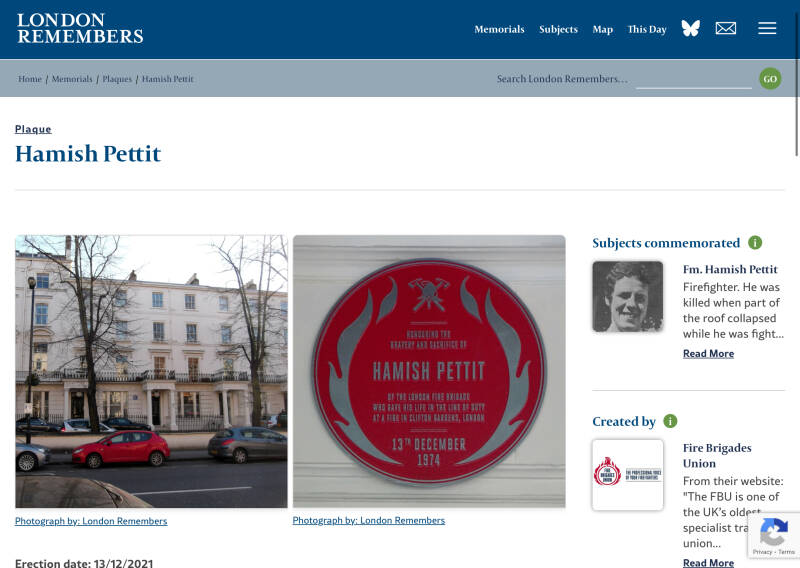
SIR AMBROSE FLEMING
Professor of Electrical Engineering at UCL. Inventor of the thermionic valve. Consultant for emerging electrical companies. While working with MARCONY he invented the wireless valve
Shops and eateries
THE EAGLE P.H.
THE WINDSOR CASTLE P.H.


Diversion along Bloomfield Road and along the Regent’ Canal to Regent’Park
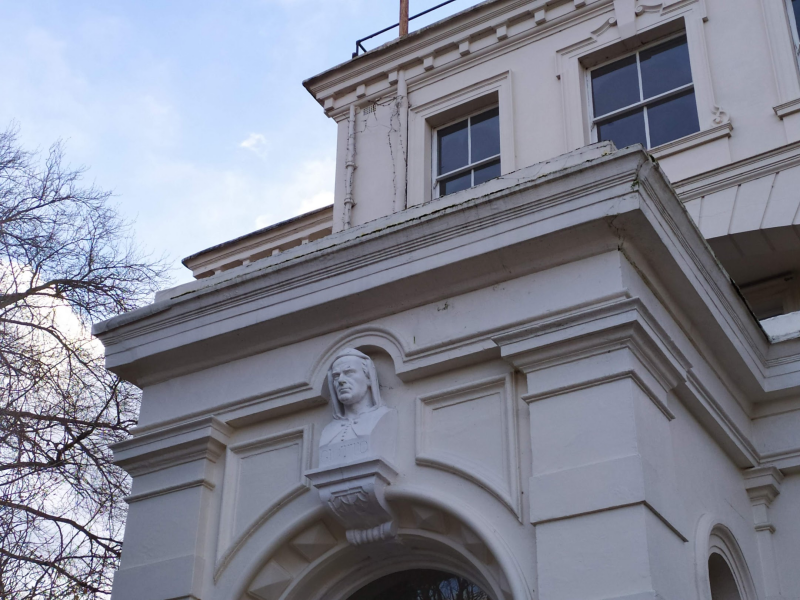
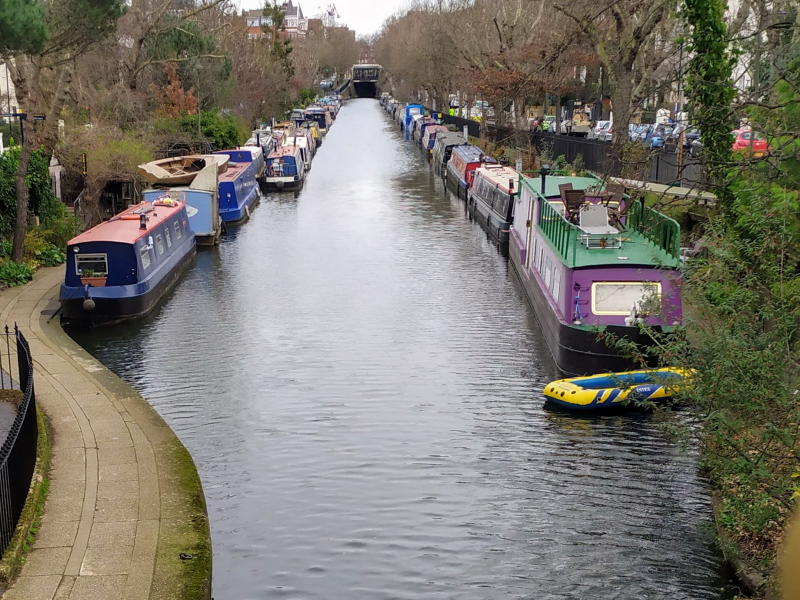

Randolph Road, Clarendon Gardens, Randolph Mews
THE HOWLEY PLACE style finds a fitting companion on the opposite bank of the canal, in Randolph Road and its offshoot Clarendon Gardens. Here the classical order has mellowed into charming, almost eccentric, variation. Even gables are played with, to joyous effect.
What a pity, one thinks, that some sort of Venetian footbridge does not span the canal so the stroller can compare and contrast the two styles. It is no surprise that someone with a discerning eye like. Sir John Tenniel - illustrator of Alice in Wonderland - should have chosen to live at No. 10 Randolph Avenue, or that he stayed for more than fifty years, from when the house was built in 1853 up to 1909.
The builder of much of these streets has left us traces of his personality in stucco: clever little clasps upon the portico columns, endless shells as centrepieces above windows, blank windows galore. The visitor should note the eight "blinds" decorating the side of the house on the corner of Randolph Avenue with Clarendon Gardens. No ordinary blank windows either: two are adorned with lovely arches and shells, and the rest are similarly embellished.
Nos. 17-25 Randolph Avenue — a complete unit — was worked into a most beautiful creation carrying all the builder's cherished devices, the clasps, stamps, shells, with incised dots appearing here there and everywhere.
His hand was evident, too, at the corner of Clarendon Gardens and Randolph Road. A mature work, it must be seen as the pinnacle of his efforts in Maida Vale.
Here is a detached villa, though comprising two homes, comfortably substantial without being gross. But in addition to his usual decor he has scooped the facade up into a gable, almost Dutch style, but in stucco rather than exposed brick. Most of the villas on the east side of Randolph Road carry these pleasant gable extras.
Clarendon Gardens could be called the Street of Capitals. As well as iron balconies running the length of the terraces there are porticoes all uniformly equipped in a composite-Ionic order, giving the street a splendid unitv.
Randolph Mews
Former electrical substation, 1927, now THE RED HOUSE
RESIDENTIAL MOORINGS
LAVILLE: Bridge-restaurant over EDGWARE ROAD
An old shed, a kind of saddlery for horses?. By the end of the 19 th c. two ti y shops filling the space, a tobacconist and a greengrocer?…
A film location: Drew Barrymore
You cross over Edgware Road, and follow Aberdeen Place
GUY GIBSON lived here
Former CROCKER’S FOLLY, now Libaneses restaurant
In 1987, the pub's name was changed to Crocker's Folly, which had been its nickname for many years. The story was that Frank Crocker, believing he had a reliable tip-off about the site of the new terminus of the Great Central Railway, built the pub on a lavish scale to serve it, however when the terminus was actually built it turned out to be over half a mile away at Marylebone Station – leading to Crocker's ruin, despair and eventual suicide, jumping from the window of an upper floor.[3] In reality, Crocker died in 1904, aged only 41, but of natural causes,[4] although the subsequent landlord, Charles Durden, did kill himself in the way described.[5]
Along canal towpath
Tunnel under Lisson Grove (road)
LISSON GROVE MOORINGS

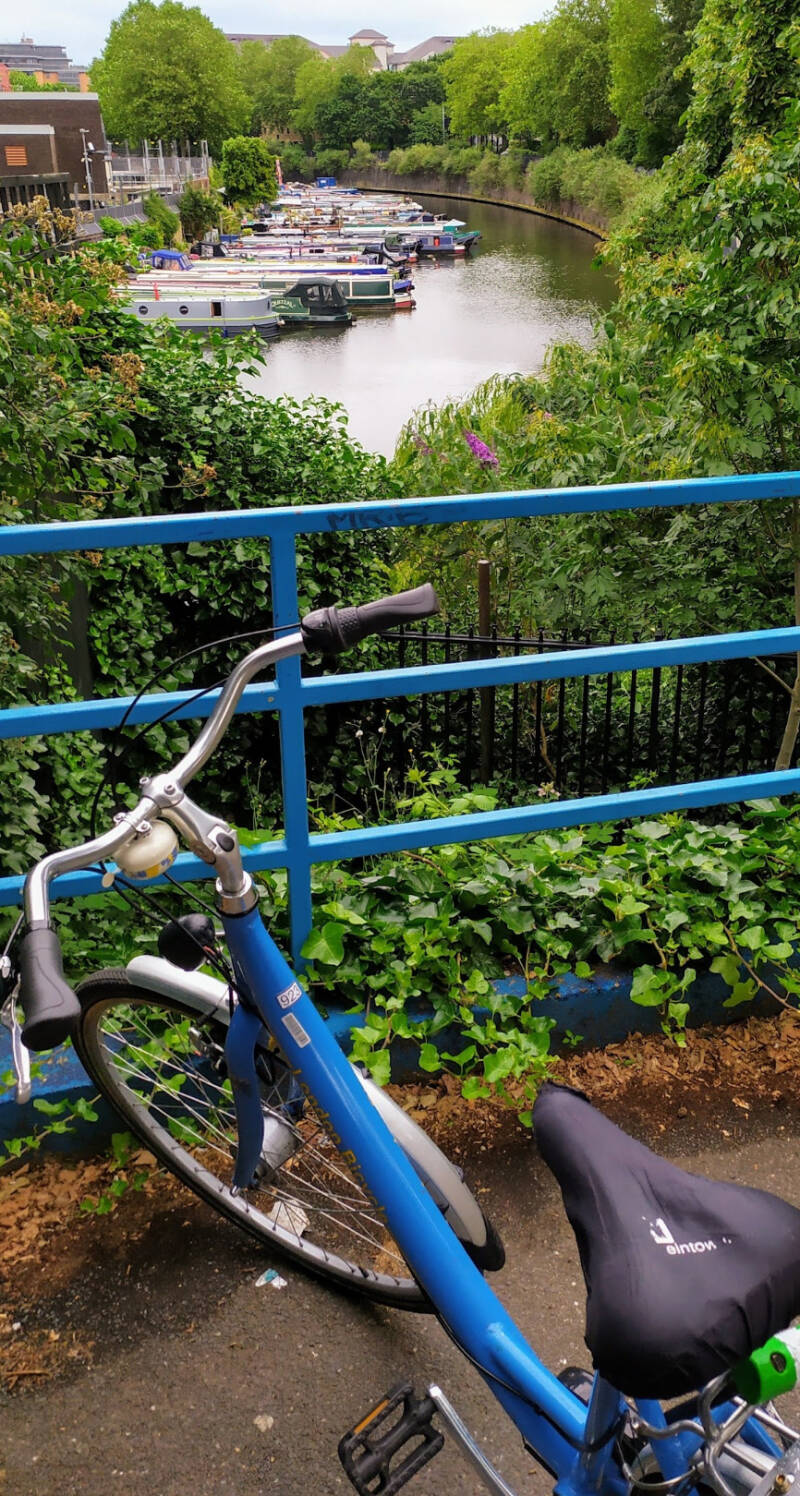
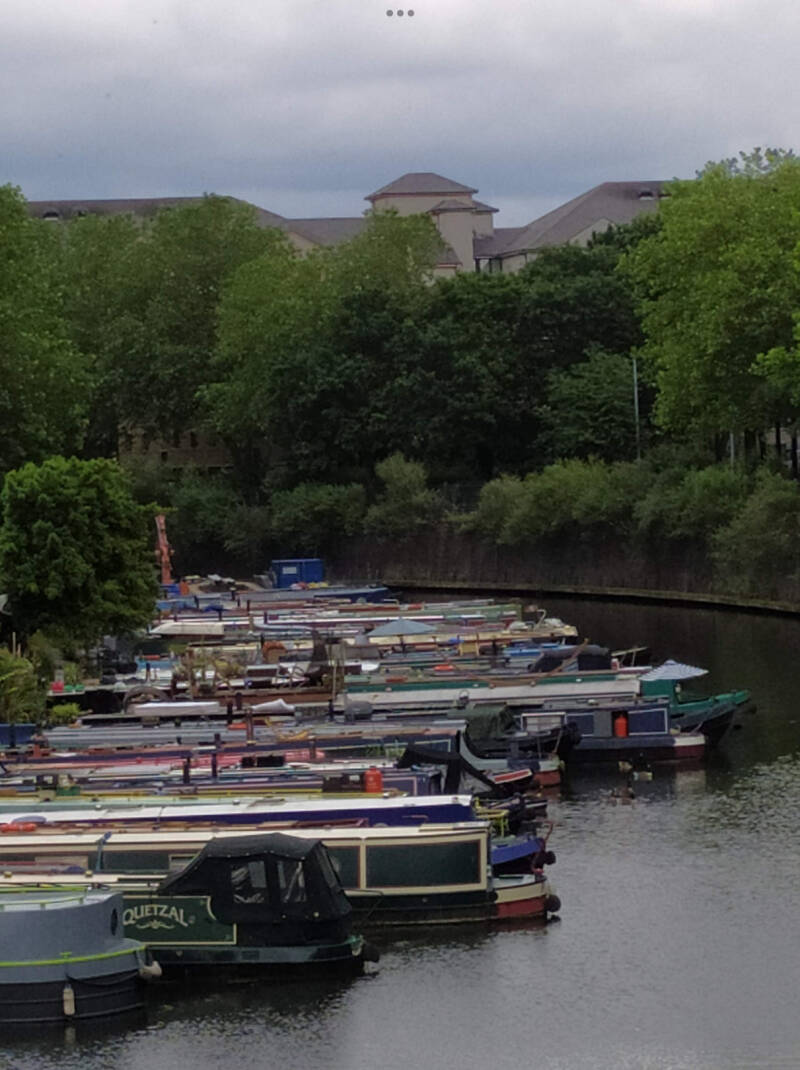
Historically, Lisson Grove was an unloading point for barges delivering coal to feed the adjacent electricity station.
Now it is a charming, well established mooring site - one of the largest managed by the Canal & River Trust in London, and one of few situated on the towpath-side.
This is a leisure site and is determined by us to be a mooring site for the storage of boats between leisure use, customers may well spend weekends on this site, and occasionally longer periods, but it is not sold as, or intended to be suitable for long term residential use.
Site of LORD’s CRICKET GROUND
Railway lines from/to MARYLEBONE Station
Under Park Road
(REGENT’S PARK)
(LONDON CENTRAL MOSQUE)
(Classical-looking, but recently build, villas)
Quinlan Terry's Regent's Park villas are six large detached villas on the north-western edge of London's Regent's Parkdesigned by the English Driehaus Prizewinner and New Classical architect Quinlan Terry between 1988 and 2004. Terry designed each house in a different classical style, intended to be representative of the variety of classical architecture: the Ionic Villa, Veneto Villa, Gothick Villa, Corinthian Villa, Regency Villa, and the Doric Villa.
Quinlan Terry is a well-known representative of New Classical architecture and the favourite architect of King Charles III.[1][2] He has a keen interest in how traditional architecture contributes to the debate on sustainability and has lectured frequently on the subject.
Quinlan Terry continues to practise full time with partner Roger Barrell under the name Quinlan Terry Architects LLP.
QUINLAN TERRY’S writings: https://qtarchitects.com/publications/
https://www.telegraph.co.uk/books/what-to-read/prince-charless-favourite-architect-war-ugly-buildings-brainwashed/
(WINGFIELD HOUSE, residence of the American Ambassador to the Court of St.James’s

In 1936 Regency HERTFORD HOUSE was partly destroyed by fire and it was bought by Barbara Hutton.The world-famous heiress was then twenty-four years old and married to Count Haugwitz-Reventlow. Shorty after her purchase of the home, on August 10, 1936 the Crown Estate Commission gave permission for Regency villa to be torn down and rebuilt as a red brick Georgian style house. In 1939, World War II was on the brim of erupting and Barbara’s marriage to Count Reventlow was coming to an end, she soon returned to America. Winfield House was commandeered and used by an RAF barrage balloon unit. The windows were boarded up and balloons corrupted the gardens where officers played football on a team called “Barbara’s Own” made to be a mockery. Winfield underwent harsh abuse from the hands of the war. Barbara ventured back to London a year after the was concluded to see what remained. After witnessing the wreckage, she phoned her lawyer in New York and told him she wanted to give the house to the U.S. Government to be repaired and used as the official residence of the American Ambassador to the Court of St. James’s. Her “most generous and patriotic offer” was accepted in a personal letter from President Harry Truman. For nothing more than one United States dollar, Barbara passed the home on to American ownership where it now stands, as the United States of America’s Embassy
In order to see the previous sights: Exit the RC at CHARLBERT BRIDGE (and then along OUTER CIRCLE, the road around RP)
Alternatively, to ST.JOHN’S WOOD

Back to the principal route, in Maida Vale, from the LU station, along Warwick Avenue
Warwick Pl.
1850. Parade of shops
THE WARWICK CASTLE P.H.
Walls lined with match boarding, touches of fine glass to embellish the lobby and the bar, cute little marble fireplace in a cute snug, suspended lamp hanging from the first floor…
Westbourne Terrace Road Bridge

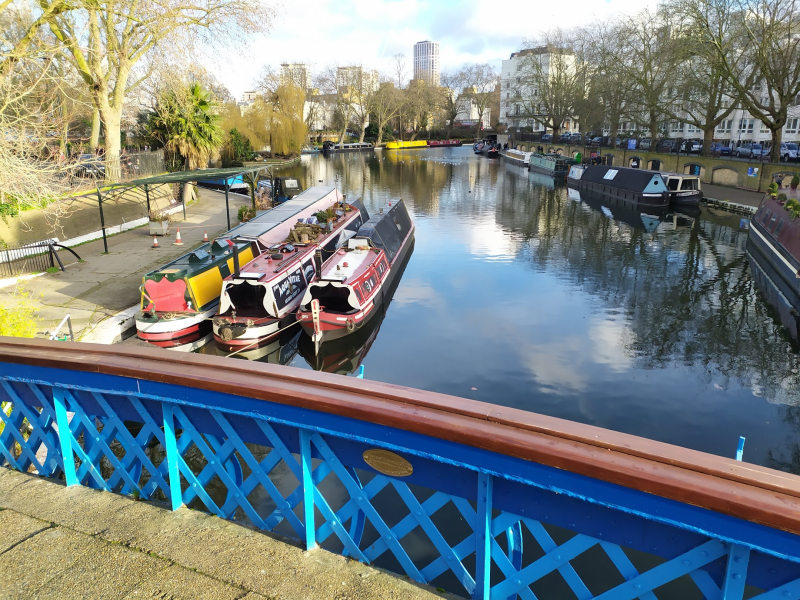


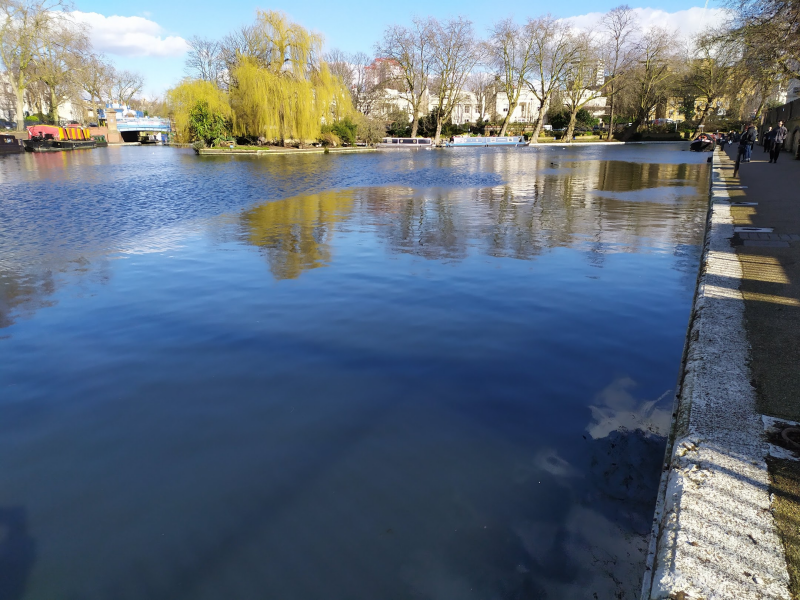
1907. Officially opened. Designed by NEWTON, Borough Surveyor. Replaced older bridges which had the wrong incline for modern motor cars, and gas and water mains were incorporated underneath. West side: widened 1965.
Then the Borough of Paddington, now the City of Westminster
LITTLE VENICE
You are at the junction of the Paddington Arm of the Grand Union Canal, the Regent's Canal, and the entrance to Paddington Basin. This junction, also known as Browning's Pool, forms a triangular shape basin designed to allow long canal boats to turn around. Many of the buildings in the vicinity are Regency white painted stucco terraced town houses and taller blocks (mansions) in the same style.
This section of MAIDA VALE, along the canals and around the basin has acquired the name of LITTLE VENICE quite recently -from the 1930s?, from just after WW2?. Was it an estate agent with a brave promotional flair?.
Or had it been RUSKIN, or BYRON who compared this area with Venice?. Or was it resident ROBERT BROWNING?
According to PEVSNER it was more like Amsterdam.
The Padddington Arm of the Grand Union Canal
The Padddington Arm of the Grand Union Canal (formerly the Grand Junction Canal) like all the Grand Union routes, was actually owned by the Regents Canal company. Their Grand Union network was formed in 1929 and was the last major waterways merge before nationalisation. The Paddington Arm was one of the last to see the old fashioned style of regular commercial traffic, paired narrowboats carrying the traditional materials such as coal, oils, tar. The Paddington Arm now sees a lot of regular commercial traffic, usually in the form of aggregates. Its usually construction materials eastwards and rubble westwards for Old Oak or other destinations.
Canals were in the 18th c. N of England the most efficient mode of transport. One horse drawing a barge made possible the transport of the equivalent of 8 horses drawing 4 wagons. In 1761, first commercial canal from WORSLEY ESTATE to MANCHESTER. The network grew and pressure grew as well to extent it to London. Cornish Banker WILLIAM PRAED chaired a committee in 1792 that put forward the idea to connect the THAMES at BRENTFORD to the OXFORD CANAL, which had already a link with BJIMINGHAM.
ROYAL ASSENT, and the creation of the GJC Company followed. Then construction started the stretch to UXBRIDGE… But, then, commercial pressures forced the company to build a branch from SOUTHALL to the village of PADDINGTON: the PADDINGTON ARM, 13 m., which opened in 1801.
Paddington was transformed with the construction of wharves and sheds, servicing cattle land vegetables markets. Building supplies arrived as well. An manure from London was exported from “stinking”Paddington.
The Regent’s Canal
1811. Plans of REGENT’S PARK, by JOHN NASH. And then the extension of the canal system from here to LIMEHOUSE, some 9 m. away, at the heart of the commercial docks, gained support.
During the passage of the Regent's Canal Bill the local clergy felt compelled to raise their concerns with the Bishop of London Based on their experiences of the construction of the Paddington Arm they expressed the following views. 'The alarm which this Bill has produced is principally derivable from two sources. The first and most apparent is the additional evil which any additional Canal must produce upon the Morals of chand bition amal, el frondend experience the Profiracy at the of sunday bof the constant transit of Barges on that day, the indecent Exposure of Nakedness by bathing in the canal, and all other evils constantly attending upon a roving and restless set of People who are one Week in the Potteries in Staffordshire and another week in Pad-dington'.
Construction started in 1812. To calculate the tolls, a Weight bridge (WARWICK AVENUE BR.) was build to the East of the GJC Weight bridge.
The triangular basin was designed to facilitate the manoeuvering of barges . Tunnels were excavated by candle-light. The soil from MAIDA HILL tunnel was used as the top soil of Lord’s CRICKET GROUND, which had to move out of the site of the course of the new canal.
1816. HAMPSTEAD ROAD. 1820. THAMES.
Where horses couldn’t pull the barges (tunnels) bargees (a second man was hired) had to leg the barges forward through the tunnel, with their legs against the walls.
Living on barges, then

Imagine this place in its commercial prime. Tonnages of coal timber, and farm produce and industrial products inched down from middle England, heading to Paddington or to the Thames. The barges were guided by a professional barge and his family, forever on the move. A life of locks. The jangle of towpathhirses. They had their solidarity of sorts, a fraternity down the generations. A colourful atmosphere.
• Census findings. The population survey of 1861 observed that several thousand people lived for the chief part of the year on board canal boats in England p and Scotland. Commentators believed them to be hardy and industrious folk sober and careful habits — in the main - and praised the picturesque appearance, of their mobile homes, particularly on the Grand Junction Canal. Many carried female names, but others were called after celebrities and even leading politicians.
Traffic first rose, then declined, because the railway competition. Horses had given way to steam, at its turn, giving way to engines. In the 20th, road transport competition caused the complete decline of canal transport.
Living on barges, now
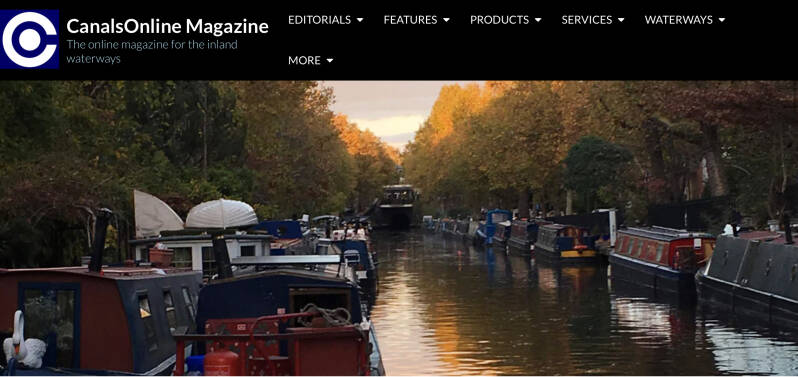
Former TOLL HOUSE
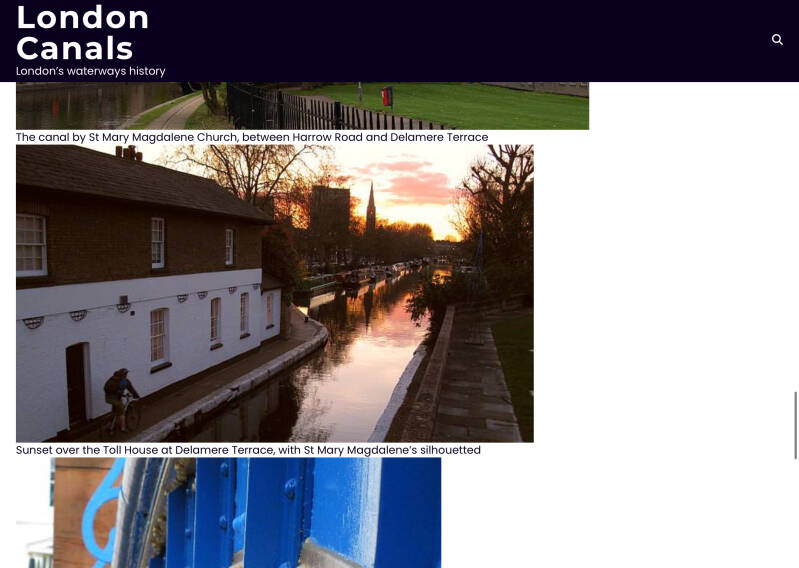
Typical of the GJC Co building: wide eaves, slate roof, brick and stucco. Official- looking. The canal narrows at this point: only one barge to pass.
It was here that the canal company official measured the height of the boat’s side above the water : the lower the vessel the greater the charge. To decide the amount to be fixed the officer read off the weight on a table kept in the toll house.
Around the Browning Pool
Warwick Crescent
Running along the southern edge of the Grand Union Canal, the street began to be built up around 1852 when William Buddle purchased 12 plots of land for development. The poet Robert Browning lived at No. 19 between 1861 and 1887, where he wrote The Ring and the Book.
Beauchamp Lodge at No. 2 Warwick Crescent was used as a hostel for musicians for many years. Katherine Mansfield stayed at the Lodge in 1908.[2]
At the turn of the 20th century, the area around the street went into gradual decline and suffered overcrowding. By the 1950s it had become one of the worst slums in London. In 1966, the street was cleared of properties by the Greater London Council and rebuilt.
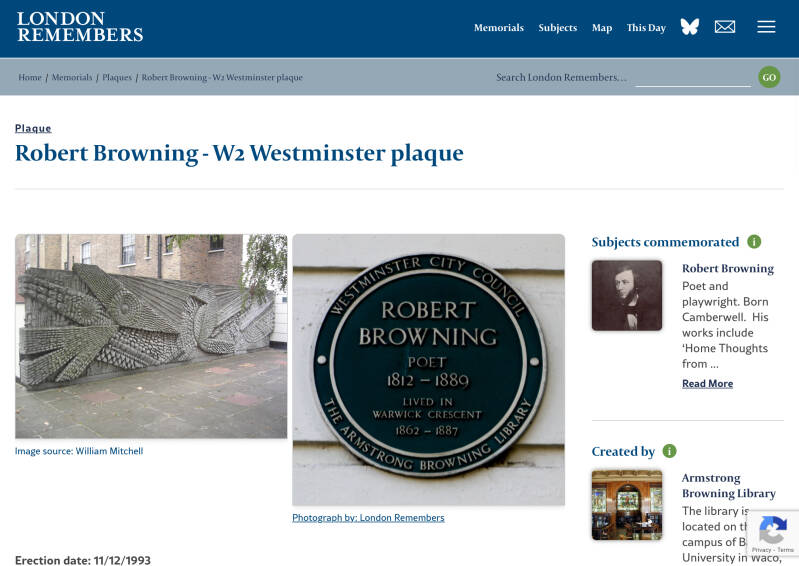
THE BRIDGE HOUSE P.H.
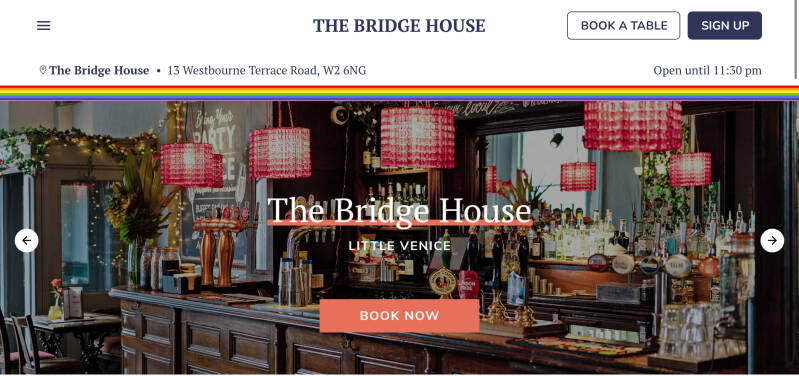
Ploughmen and farmers used to be the main patrons of the ale house sited here, before this Georgian house was built (one of the first, after the completion of the canal)
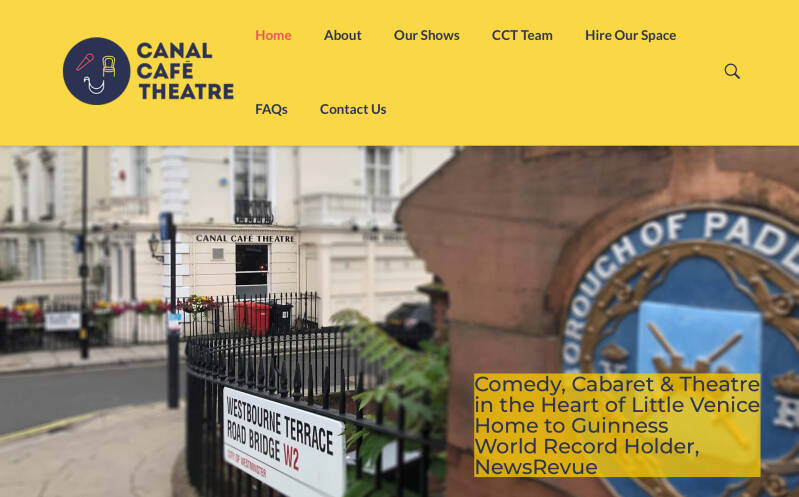
The theatre was founded in 1985 as the residence for the NewsRevue satirical sketch show and remains its home The show annually transfers to the Edinburgh Festival Fringe
Waterside Café
A barge trip to (or from) Camden Town (or London Zoo)
PUPPET THEATRE
BROWNING ISLAND
REMBRANDT GARDENS
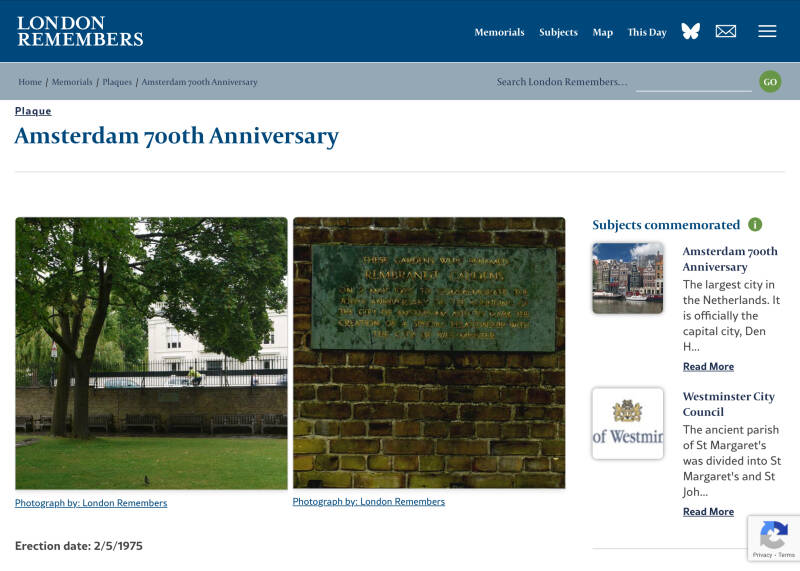
These gardens were renamed Rembrandt Gardens on 2 May 1975 to commemorate the 700th anniversary of the founding of the city of Amsterdam and to mark the creation of a special relationship with the City of Westminster.
Do not miss!: EVERY MAY: the CANALWAY CAVALCADE
Since the 1960s canal enthusiasts have been gathering for events that celebrate them. Finally in 1983 the annual CANALWAY CAVALCADE was inaugurated by the IWA, bringing thousands during MAY BANK HOLIDAY weekend. Here barges from all over the country congregate, and a wide range of family entertainments are on offer.
More about canals!
THE LONDON CANAL MUSEUM

From the Pool…
Diversion to Paddington Green and Church St. and back to the West End, or to Paddington Basin (Station) and to Connaught Sq., Hyde Park and on to the West End

Maida Avenue
CATHOLIC APOSTHOLIC Church
The Catholic Apostolic Church (CAC), also known as the Irvingian Church or Irvingite Church, is a denomination in the Restorationist branch of Christianity.[1][2] It originated in Scotland around 1831 and later spread to Germany and the United States.[3] The tradition to which the Catholic Apostolic Church belongs is sometimes referred to as Irvingism or the Irvingian movement after Edward Irving(1792–1834), a clergyman of the Church of Scotland credited with organising the movement
St.Mary’s Terrace
JOHN AIRD COURT
Former ST.DAVID’s WELSH Church, now L’ÉCOLE BILINGÜE




Nos.1-2 ST.MARY’S TERRACE
FLEMING COURT
ST.MARY’S MANSIONS
OSBORNE HOUSE
ALEXANDRA HOUSE
ST.MARY’S Church
PARISH HALL
Site of GRENVILLE HOUSE, now CITY OF WESTMINSTER COLLEGE
Paddington Green
Nos.17/18
LSB School
Site of CHILDREN’S HOSPITAL
Church St.
Shops and houses
Edgware Road
CHURCH STREET MARKET
ALFIE’S ANTIQUES

To Marylebone, West End

To Paddington Bassin, Tyburnia (Connaught Square) and Hyde Park

You can follow the Paddington Art Trail
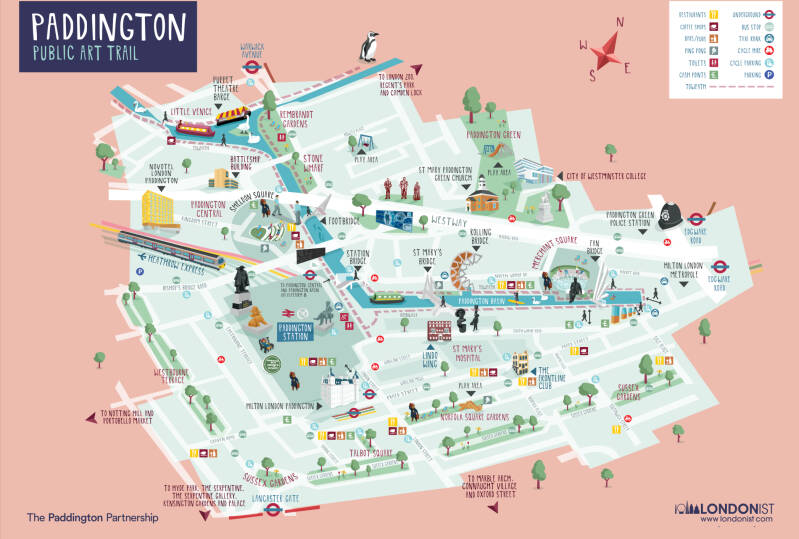
Warwick Crescent
No.2. BEAUCHAMP LODGE. Site of boarding house for musicians. KATHERINE MANSFIELD lived here
PADDINGTON CENTRAL

PADDINGTON STATION
ST.MARY’s HOSPITAL
PADDINGTON BASIN
Praed St
Shops and eateries
ST.JOHN’s HYDE PARK Church
CONNAUGHT VILLAGE

Connaught Square
HYDE PARK

Marble Arch Area

Enjoying this guide?



